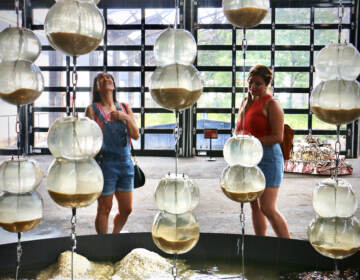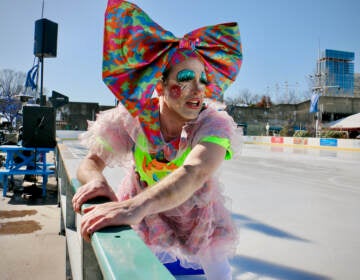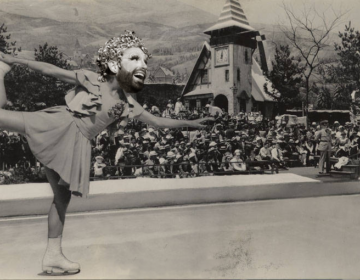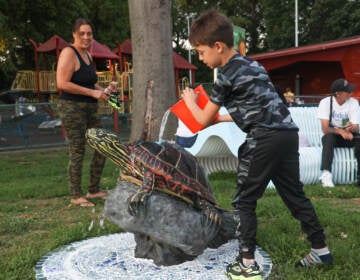Philly lobby art wants to inspire you to give up single-use plastics
The Plastic-Free Philly campaign uses art to ask people to take the pledge this summer, and give up single-use plastic.
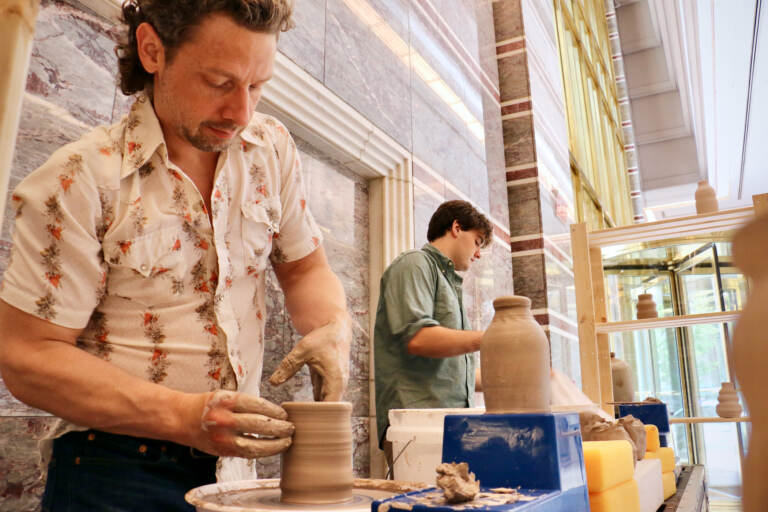
Benjamin Peterson (left) and Mike Sullivan throw clay in the lobby of 3 Logan Square in Center City. Over the course of seven weeks, they will create 156 handmade clay bottles as their contribution to the Plastic-free Philly campaign. (Emma Lee/WHYY)
The Philadelphia Water Department wants YOU…to take the pledge.
Commissioner Randy Hayman is urging everyone in the city to avoid single-use plastic water bottles this summer, and to drink tap water out of reusable bottles instead.
He said more than half of the trash removed from the Schuylkill and Delaware rivers is discarded plastic water bottles.
“It’s convenient to have a plastic bottle of water, but in the end, it ends up on a street, it ends up in an inlet, it ends up in our rivers, and ultimately can end up in our system that we use to clean the water and damage our system,” said Hayman. “It’s imperative that we eliminate that problem.”
Hayman added that Philadelphia tap water exceeds federal and state health regulations.
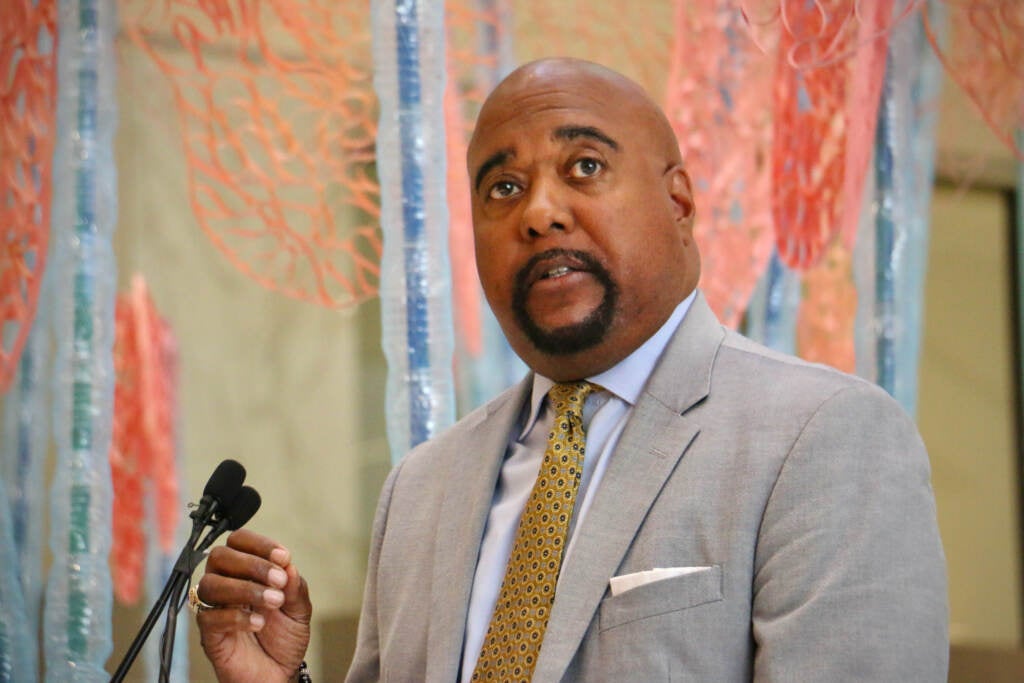
The Water Department has joined the Plastic-Free Philly campaign, an initiative of the Academy of Natural Sciences at Drexel University with a goal of getting 3,000 people to formally make a pledge to abstain from single-use plastic water bottles this summer. The campaign is in partnership with BOMA Philadelphia, a commercial real estate professional membership organization.
The Academy commissioned 10 art installations for building lobbies in Center City and University City that highlight the use and disposal of consumer plastic.
Inside the lobby of 1515 Market Street, Fiber artist Kate Leibrand of Roxborough created a nautical tableau of pier pylons encrusted with barnacles, clams, and mussels, all crafted from post-consumer recycled plastic.
Called “Choking Hazard,” the piece is meant to be a warning about plastic that is swallowed by wildlife, particularly microplastics. The way plastic bottles often break down in the environment is to break into smaller and smaller pieces, called microplastics, without ever decomposing.
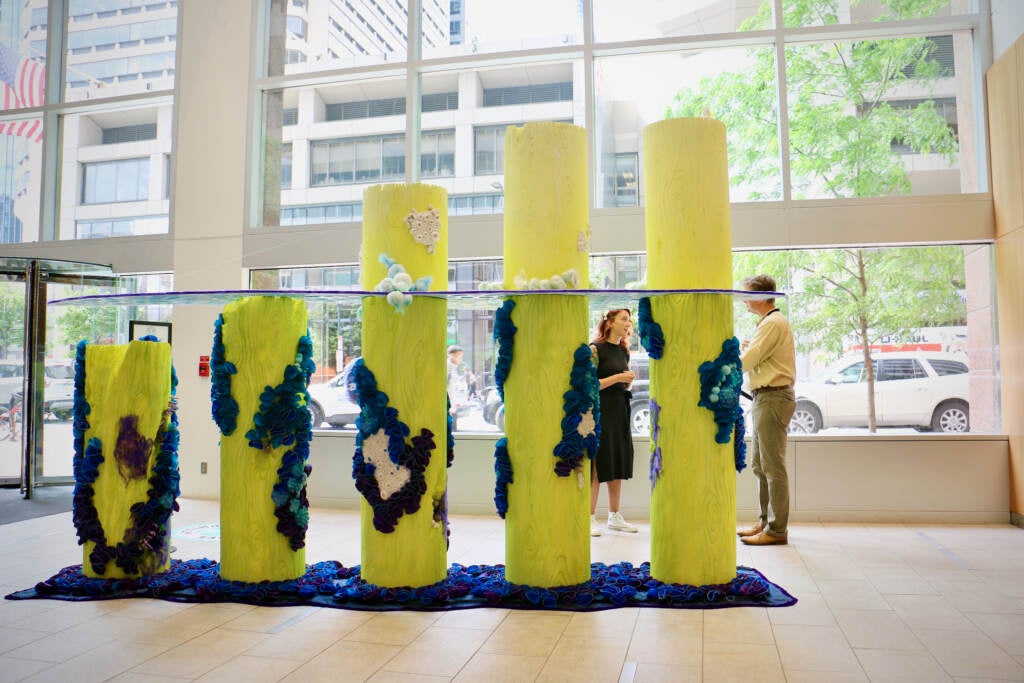
Those microplastics are consumed by fish and other waterborne organisms, thus entering the food chain.
“I wasn’t aware until this project that they’ve recently found microplastics in human blood,” said Leibrand.
Leibrand said this commission has been “eye-opening” for her. She took a hard look at her own plastic habits and dusted off her unused Nalgene bottle.
“I used to be very guilty of plastic water bottle usage. I was raised in a household where we just used plastic water bottles,” she said. “I’m not a role model when it comes to plastic usage at all, but this has woken me up to falling asleep at the wheel.”
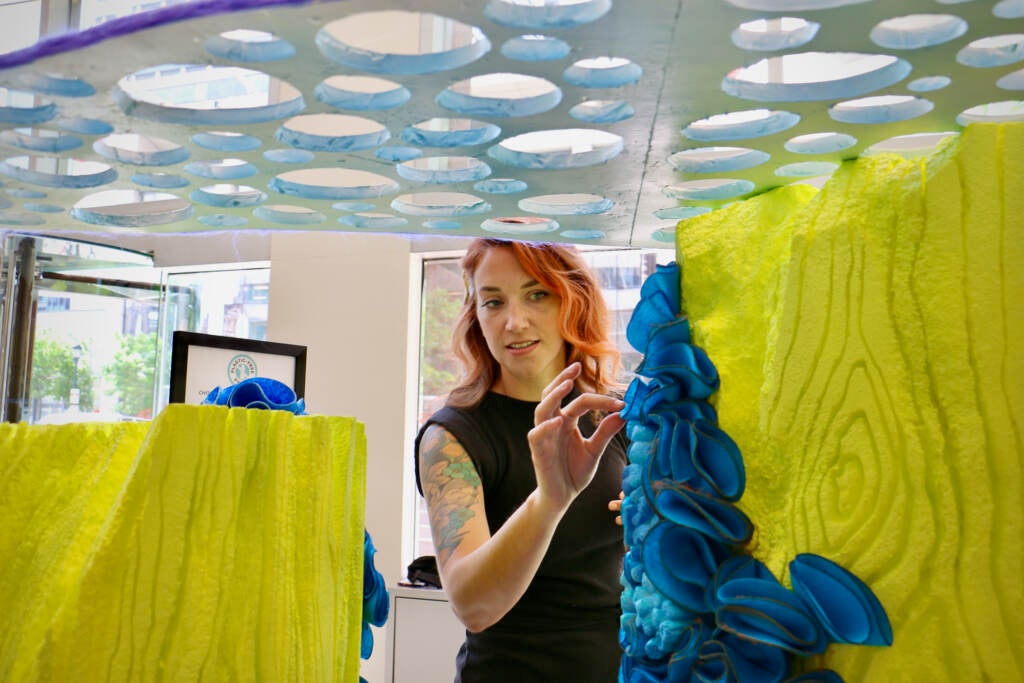
Leibrand is both participant and target of the Plastic-Free Philly campaign: she has taken the plastic pledge, herself. The art installations in public places are meant to bring plastic waste to the attention of passersby, and an accompanying QR code will take them to a website where they can make the pledge to abstain from plastic water bottles.
“Thinking about water bottles and how you drink your water opens up your mind to how prevalent plastics are in our lives,” said Marina McDougall, the Academy of Natural Sciences vice president of Experience and Engagement. “How can we reduce them, and what can we do to change that very deep and systemic problem?”

Ceramic artist Benjamin Peterson will spend the next two months creating a single person’s annual bottled water intake. In the lobby of 3 Logan Square, he has set up a portable throwing wheel where he will create his installation, “156 Handmade Clay Bottles.”
The bottles, about the size of a typical 16 oz. water bottle, but in a variety of improvised shapes, will build up around him on racks as the collection grows.
“We’ll be making 156 clay bottles because that’s the average number of plastic water bottles an American uses in the year,” said Peterson. “The idea is to show people how many that is, so that they can understand the quantity of waste.”

“156 Handmade Clay Bottles” is a performance: the installation is about the process of shaping and making clay bottles during the run of the Plastic-Free Philly campaign. It and all the installations are temporary, occupying 10 building lobbies until the end of July.
After that, Peterson said his clay bottles will likely be raffled off to the tenants of 3 Logan Square. He pointed out that the afterlife of his bottles will have none of the toxicity of the plastic bottles they are meant to represent.

Saturdays just got more interesting.
WHYY is your source for fact-based, in-depth journalism and information. As a nonprofit organization, we rely on financial support from readers like you. Please give today.



